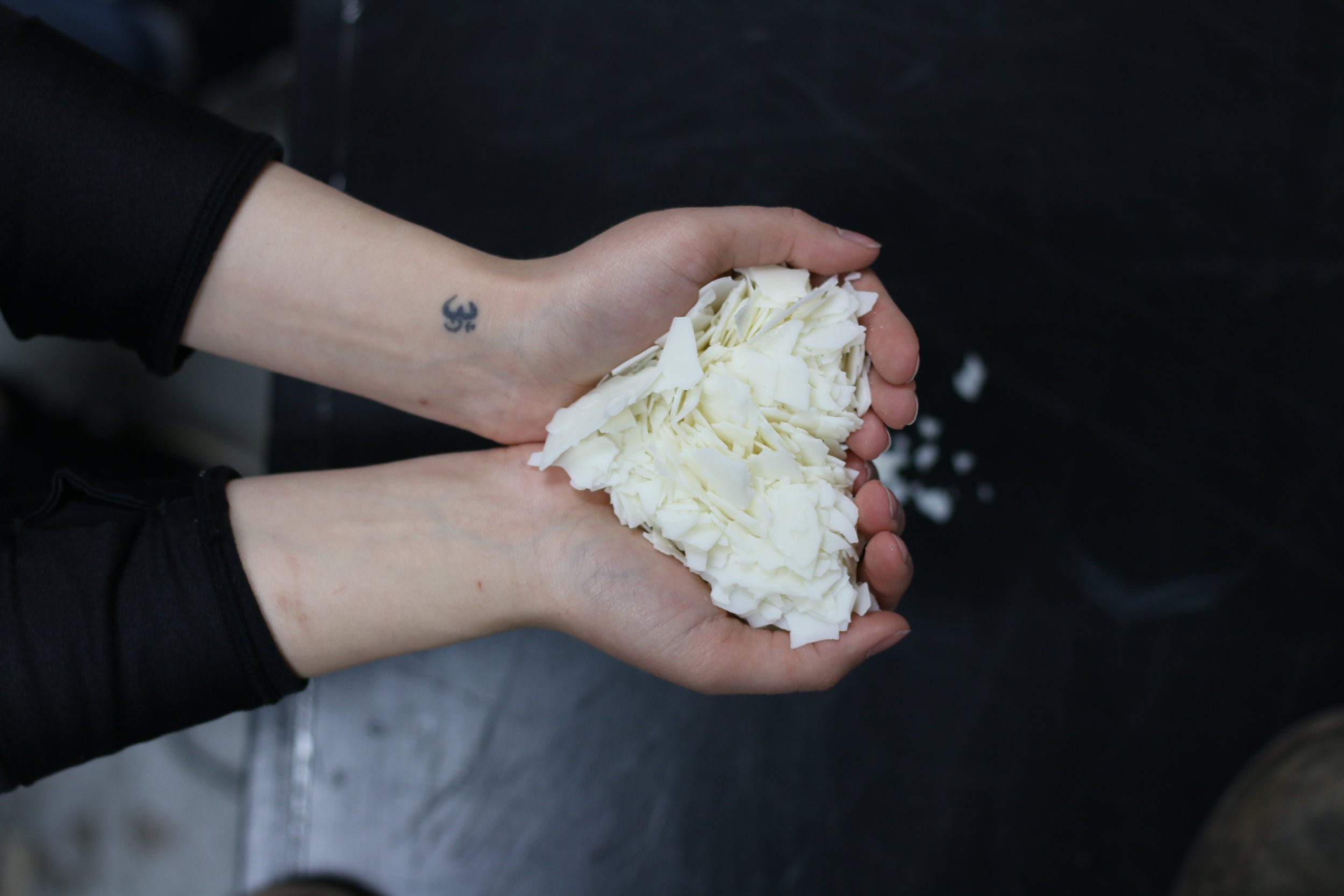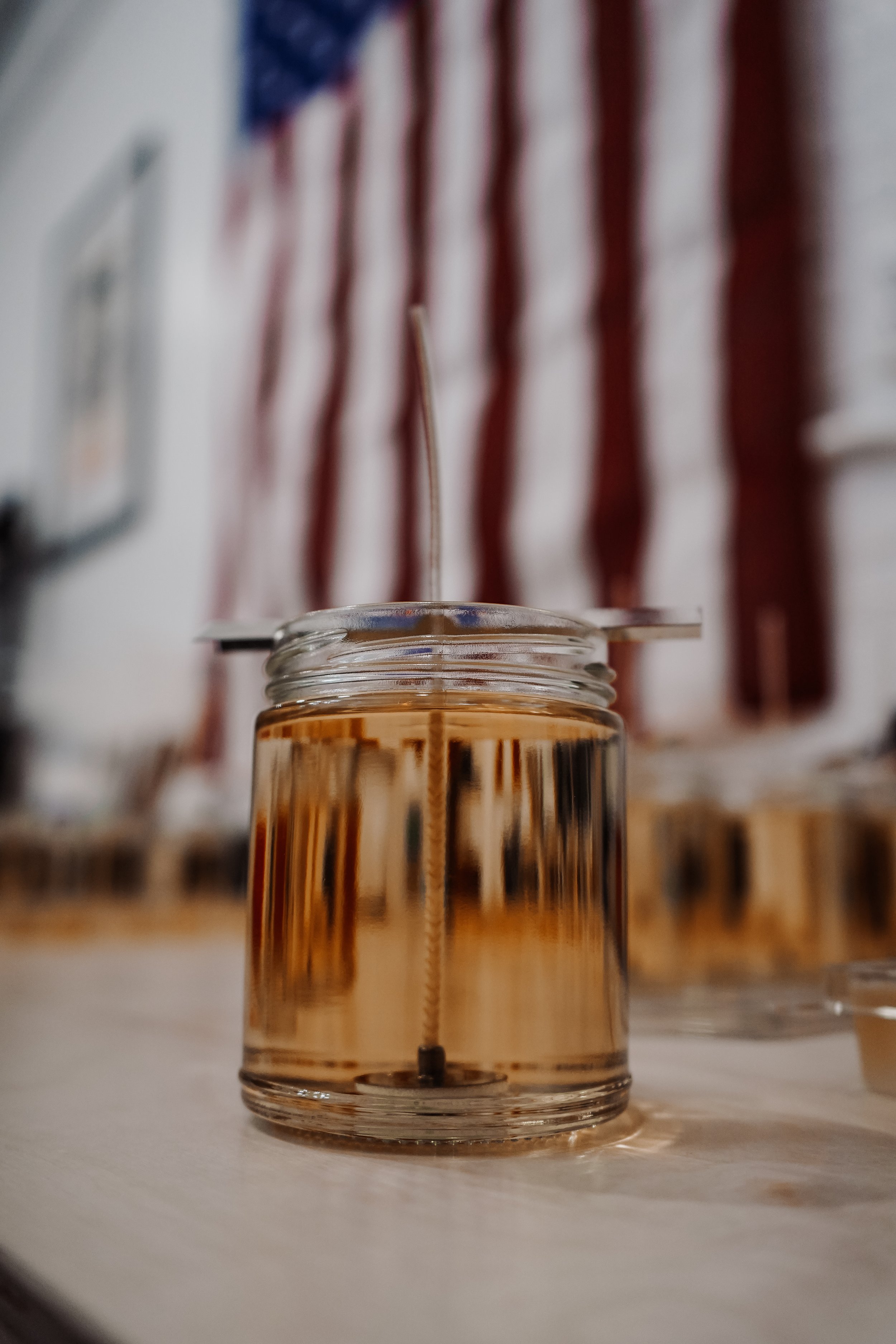Let's Discuss Candle Waxes! - Pros & Cons
Since starting Ambush Candle Co. we’ve made it very clear where our products are made, how they are made and exactly what goes into them. Candles and home fragrance are our expertise and we do our best to stay up to date with the industry as it evolves. As consumers we should expect to learn everything we want to know about a product from its seller or manufacturer, but some of the people in this industry are either not professionals, only profit focused or too lazy to study their own industry. The best thing we can do as consumers is research before buying. This doesn’t just mean taking a quick look at product reviews, it means looking into business practices; finding out where the company manufactures their products and if their components and processes are sustainable and eco-friendly.
Choice of wax is the most obvious determination of an eco-friendly candle. But to ensure that a candle is made ethically and sustainably, everything needs to be broken down. Fragrance oils, vessels, wicks, labels, production process, shipping methods and so on.
Today we’ll be discussing the basics of candle wax! There are several different types of candle waxes; paraffin, soy and beeswax are among the most popular. Paraffin is by far the most widely used wax among candle brands due to its very low price tag and obtainability. That said, it is a by-product of the oil industry and derives from petroleum, coal and oil shale. It doesn’t always hold fragrance well and often times requires chemical amplifiers to enhance the scent throw. If this hasn’t turned you away from paraffin, note that it also emits a lot of black soot when melted. This black soot can stain curtains, walls and carpets. There’s a reason that paraffin candles are so affordable; they are made from cheap, unsustainable materials. Now imagine that a $12 paraffin candle drops down to $8 by moving production to China. The candle is not only made with terrible materials but is now made in an unregulated sweat-shop by employees that are underpaid and not cared about. I won’t single out companies for their production practices but here are a few big names that use paraffin: The Yankee Candle Co., Bath & Body Works and Glade. Even the well loved Wooden Wick brand uses a paraffin blend. So the next time you see a super cheap candle, take a look at the ingredients. Brands that use paraffin often times won’t list it in the label in an effort to appear eco-friendly. When a candle brand uses a healthier wax, they’ll almost always list it on the label because they don’t have anything to hide. Let’s get one thing straight, handmade candles aren’t more expensive just because they are handmade. They often times contain higher quality ingredients and materials that are sustainably sourced and result in a higher production cost. But as consumers we need to remind ourselves that quality comes before quantity; this is true for pretty much all product categories.
Soy wax has a slightly higher price tag over paraffin wax. By contrast, soy wax burns much slower which provides a longer lasting candle (up to 50% longer than paraffin) so you get more bang for your buck. Soy wax also burns more evenly and results in less wasted wax clinging to the sides of the vessel. It is a vegetable wax made directly from soy beans. Most of the world’s soy beans are grown right here in the midwestern United States. Most farmers rotate their soybean crops with corn and the husks are used as animal feed, this allows the process to be more renewable and environmentally efficient. While all candles emit some soot while burning, soy wax burns much cleaner and results in far less soot than paraffin for example. Soy wax is sometimes temperamental with temperature which can cause frosting or white spots in the candle, neither of these are more than a cosmetic issue and can often times be reversed by just burning the candle. Because soy wax is a vegetable wax it does not release any toxins into the air, this will allow your home to maintain a cleaner indoor air quality. Because of its low melting point, soy wax burns much cooler than other types of wax making it the perfect choice for aromatherapy. Melted soy wax is used by many as a hydrating treatment for cuticles as well as a massaging agent.
Another type of wax that’s commonly found is beeswax. Beeswax is one of the oldest forms of candle wax and it still thrives in today’s market. It is an eco friendly wax that derives from bees during the honey making process. Fragrances can be used in beeswax candles but they are often times made with any. Beeswax emits a subtle, naturally sweet scent that can actually help to purify the air. As beeswax burns it ionizes the air. Negative ions bind with toxins which help to remove them from the air providing a cleaner environment. Overtime beeswax creates a little white “beeswax bloom” or sheen. It is totally natural and is caused by the oils in the candle coming to the surface. This is found in soy candles in the form of yellowing and is again completely natural. When shopping for beeswax candles, it’s important to look for 100% beeswax with no added chemicals or colors. This way you’ll be able to reap the full benefits that beeswax has to offer.
Next time you go candle shopping, be sure to shop based on the materials used and not just a good smell or a low price tag. Remember that a soy candle will actually last longer than a paraffin candle so a higher price can actually pay for itself. Many of us consumers do our best to shop ethically, but so many companies hide their processes and undercut quality products at such a high rate that it becomes hard to stay on the right path. The best thing we can do is our own research to ensure that we’re making the best decisions.
I hope that this has been helpful in understanding a few of the more common candle waxes along with their advantages and disadvantages. In the future we’ll make sure to touch on fragrance oils and other candle components. Please reach out to us if you ever have product questions, we will always be transparent with our customers. Our contact page can be found at the bottom of our website. Thanks for reading!













